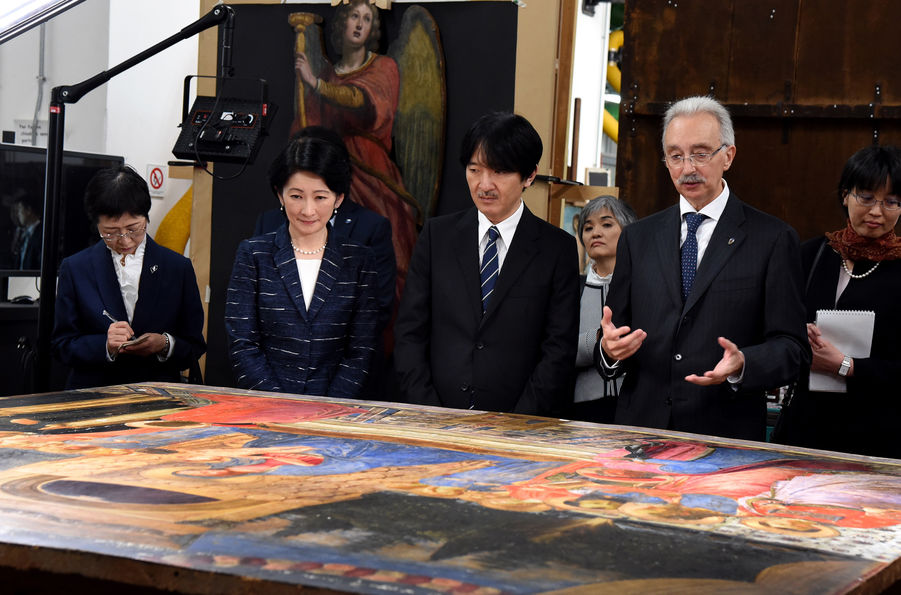Last Saturday, May 14th teams of restorers of the Opificio delle Pietre hard (the Office of the hard stone) in Florence received unusual visitors. While passing through this city, as part of their official one-week trip to Italy, Prince Akishino and his wife Princess Kiko had indeed made a quick visit the laboratories of the institute of scientific research and restoration works art that is among the largest in the world, to see the work in progress. And the youngest son of their Imperial Majesties and his wife have been rather spoiled because they were able to look at two masterpieces of the Italian Renaissance being restored: the painting of the Adoration of Magi painted about 1481 by Leonardo da Vinci and the bronze reliefs of the south door of the baptistery of San Giovanni by Andrea Pisano between 1330 and 1338.
The Japanese royal couple were giving them a private tour of the Uffizi, the Vasari Corridor and the Pitti Palace. Kiko and Akishino ended the day at the Natural History Museum of the Specola.
The Prince Akishino and Princess Kiko were in Italy to celebrate the 150th anniversary of the Treaty of friendship and exchange signed between this country and Japan in 1866. This official visit has first conducted in Rome where they arrived this Tuesday, May 10, and then they went to Milan, Bologna and Florence.
Photo Credits: Paris MAtch
The Japanese royal couple were giving them a private tour of the Uffizi, the Vasari Corridor and the Pitti Palace. Kiko and Akishino ended the day at the Natural History Museum of the Specola.
The Prince Akishino and Princess Kiko were in Italy to celebrate the 150th anniversary of the Treaty of friendship and exchange signed between this country and Japan in 1866. This official visit has first conducted in Rome where they arrived this Tuesday, May 10, and then they went to Milan, Bologna and Florence.
Photo Credits: Paris MAtch
- 13:50:00
- 0 Comments
























































































